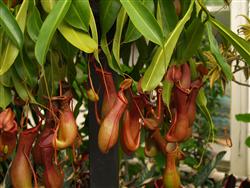 Want to Grow Carnivorous Plants?
Want to Grow Carnivorous Plants?
These fascinating plants provide entertainment and stimulation to the enthusiast. Nine lessons cover a range of cultivated carnivorous plants, paying particular attention to the Pitcher Plants (Nepenthes) and Sundews (Drosera).
This is a great course for horticulturists, gardeners, nurserymen, teachers or anyone who wants to know more about this quirky but fascinating subject.